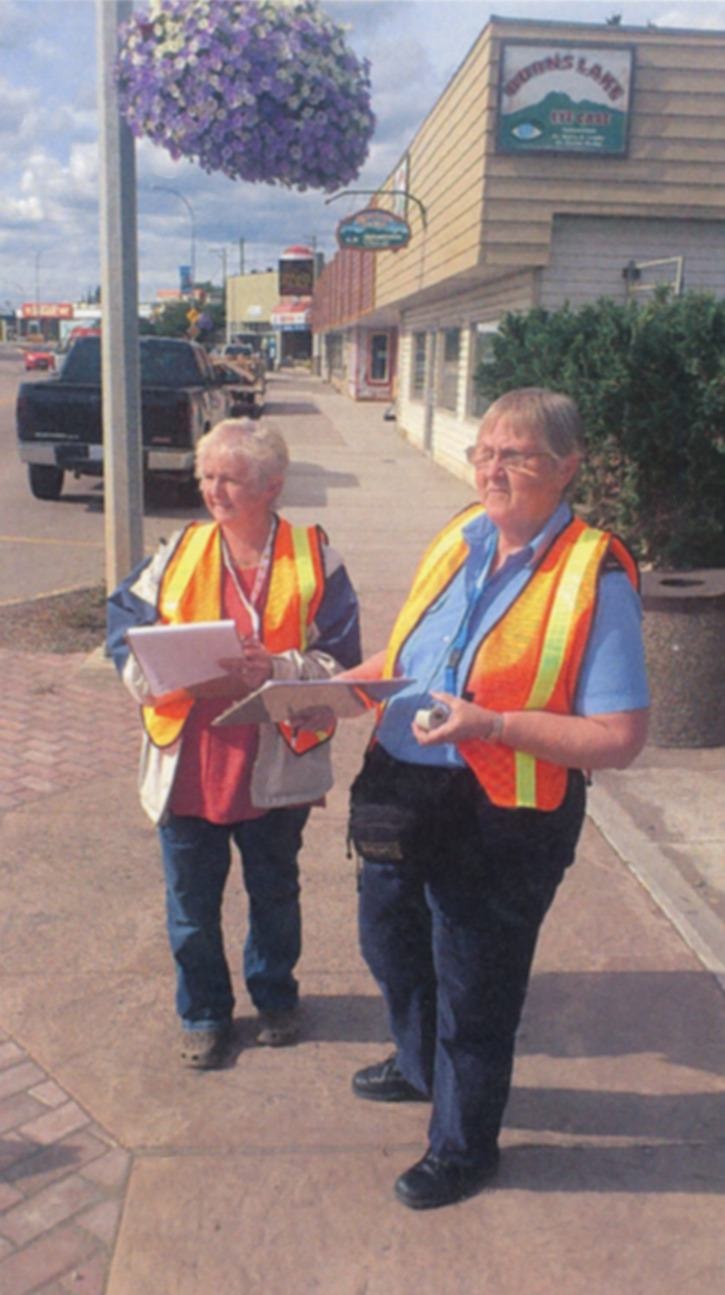Motorists who tour through Burns Lake are in desperate need of fine-tuning their driving habits, according to a recent traffic survey conducted by local volunteers in the village late last month.
The Northern Brain Injury Association (NBIA) volunteers administered the annual road safety survey at different times of the day Aug. 23, 25, 26 and 28 at various spots around town in an effort to identify key areas of the village where more focus on safe driving habits need to be placed. Once the field work was completed, volunteer Bernadette Peebles compiled the eye-opening results into an easy read report that will be handed to members of the Burns Lake RCMP detachment, the NBIA and the Village of Burns Lake.
"Traffic infractions could cause car accidents and car accidents invariably cause brain injuries, so that's why we were doing it," said Peebles, noting they observed 400 to over 800 vehicles per hour passing through the intersection depending on the time of day. "It was amazing how many people failed to signal before they left the highway or before they entered the highway, how many people failed to stop at stop signs, how many pedestrians didn't use the cross walk and the bicyclists that don't wear helmets."
Peebles said one unsafe traffic move that especially caught her eye was a red Corvette crossing the railway tracks while the approaching train signals were flashing and the safety arms were coming down. She said another stupid move pulled off by a multiple motorists involved people doing U-turns at the intersection despite oncoming traffic.
"I had a police officer standing with me for 15 to 20 minutes [one day]," she said. "He was amazed at what we were seeing. Even with him standing there in uniform people still weren't signalling to go off Hwy. 16 onto Francois Lake Drive. That's a major intersection and…coming off Francois Lake Drive going towards Prince George there is a stop sign. People would blow through it. They wouldn't even slow down."
In total Peebles and her group of volunteers from the Citizens on Patrol Society (COPS) and the RBC Royal Bank observed 3591 vehicles pass through the intersection along with numerous pedestrians and bicyclists over the course of six hours during the four days. She said the traffic flow is up over last year when she completed a similar study for NBIA while the rate of infractions seems similar.
According to the NBIA, 2383 vehicles, 24 cyclists and 170 pedestrians were counted in the 2013 Burns Lake traffic survey with 0.5 per cent of motorists being observed as driving while distracted and another 8.6 per cent failing to obey provincial road laws. It was also found that 50 per cent of cyclists rode without a helmet, 12.5 per cent drove on the sidewalk or against traffic and 100 per cent failed to come to a complete stop at stop signs, while 24 per cent of pedestrians crossed streets illegally.
Will Lewis, case manager for the NBIA, said the annual traffic study has raised awareness considerably about unsafe driving practises and the consequences of getting into an accident in the various northern communities they hold the survey in each year. He said in many northern communities there are no brain injury associations and even no social service agencies in some, so being able to get into the community to conduct a study like this helps members of the community understand where more safety efforts need to be stepped up.
"By us being in the communities doing these surveys we raise awareness about brain injury and about injury in general, but more importantly about road safety and just reducing overall accidents," said Lewis, noting the NBIA conducts these surveys annually in Prince George, Terrace, Quesnel and Burns Lake along with two or three alternating communities. "The more money we can save through prevention the more we can put into services for people who have been injured."
Lewis said the work these volunteers have done will be released to all the regional districts and community associations in their area along with their local RCMP detachments to try and bring about a change for the better.
"There is no real way for us to tangibly document all of the positive effects, but anytime you're raising awareness, injury prevention awareness of any kind, it will have a significant impact," he said. "Even if you only say stop one brain injury from happening in Burns Lake over the next year you just saved a million dollars."
